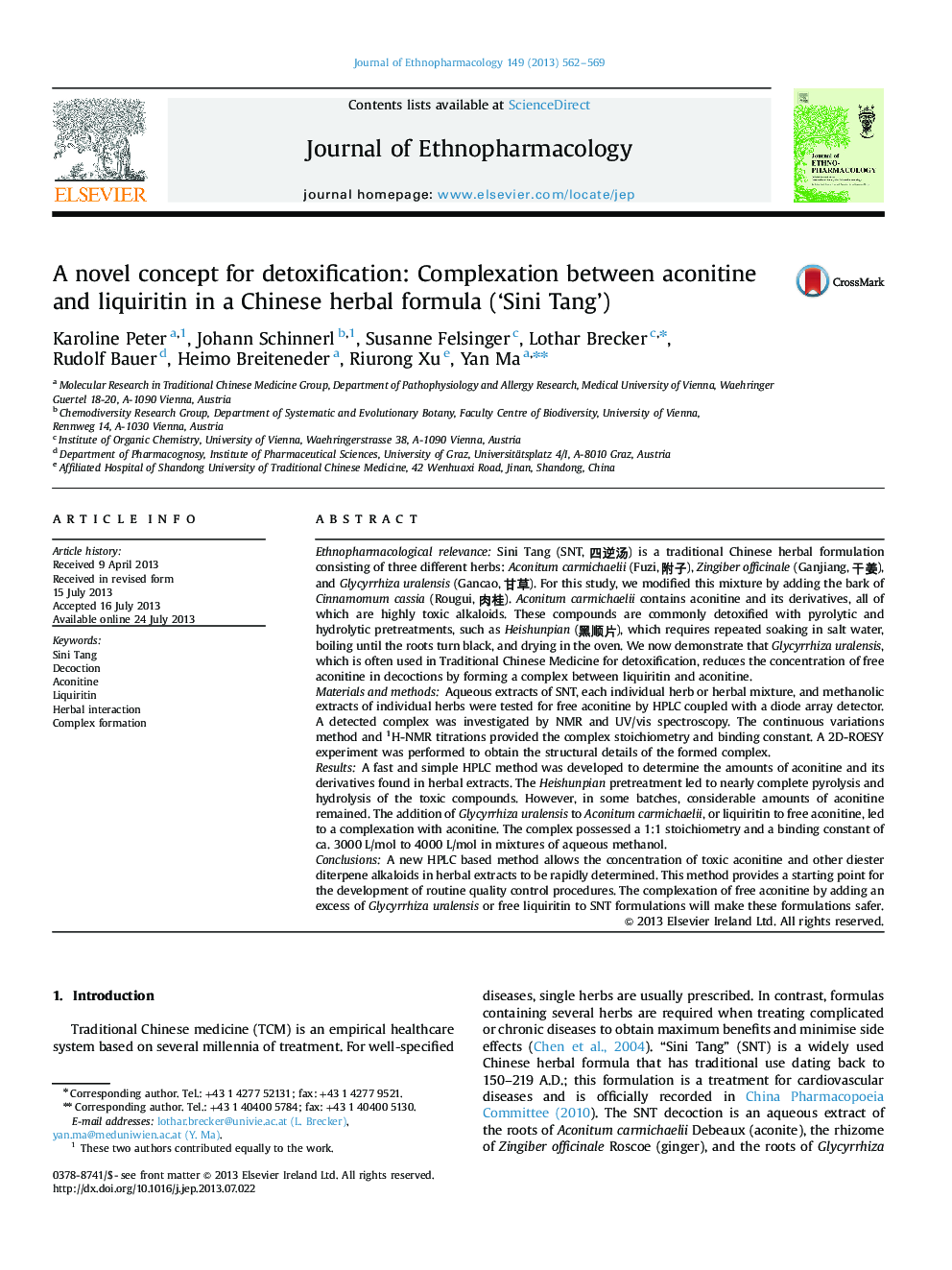| کد مقاله | کد نشریه | سال انتشار | مقاله انگلیسی | نسخه تمام متن |
|---|---|---|---|---|
| 5837229 | 1123961 | 2013 | 8 صفحه PDF | دانلود رایگان |

Ethnopharmacological relevanceSini Tang (SNT, ) is a traditional Chinese herbal formulation consisting of three different herbs: Aconitum carmichaelii (Fuzi, ), Zingiber officinale (Ganjiang, ), and Glycyrrhiza uralensis (Gancao, ). For this study, we modified this mixture by adding the bark of Cinnamomum cassia (Rougui, ). Aconitum carmichaelii contains aconitine and its derivatives, all of which are highly toxic alkaloids. These compounds are commonly detoxified with pyrolytic and hydrolytic pretreatments, such as Heishunpian (), which requires repeated soaking in salt water, boiling until the roots turn black, and drying in the oven. We now demonstrate that Glycyrrhiza uralensis, which is often used in Traditional Chinese Medicine for detoxification, reduces the concentration of free aconitine in decoctions by forming a complex between liquiritin and aconitine.Materials and methodsAqueous extracts of SNT, each individual herb or herbal mixture, and methanolic extracts of individual herbs were tested for free aconitine by HPLC coupled with a diode array detector. A detected complex was investigated by NMR and UV/vis spectroscopy. The continuous variations method and 1H-NMR titrations provided the complex stoichiometry and binding constant. A 2D-ROESY experiment was performed to obtain the structural details of the formed complex.ResultsA fast and simple HPLC method was developed to determine the amounts of aconitine and its derivatives found in herbal extracts. The Heishunpian pretreatment led to nearly complete pyrolysis and hydrolysis of the toxic compounds. However, in some batches, considerable amounts of aconitine remained. The addition of Glycyrrhiza uralensis to Aconitum carmichaelii, or liquiritin to free aconitine, led to a complexation with aconitine. The complex possessed a 1:1 stoichiometry and a binding constant of ca. 3000Â L/mol to 4000Â L/mol in mixtures of aqueous methanol.ConclusionsA new HPLC based method allows the concentration of toxic aconitine and other diester diterpene alkaloids in herbal extracts to be rapidly determined. This method provides a starting point for the development of routine quality control procedures. The complexation of free aconitine by adding an excess of Glycyrrhiza uralensis or free liquiritin to SNT formulations will make these formulations safer.
327
Journal: Journal of Ethnopharmacology - Volume 149, Issue 2, 16 September 2013, Pages 562-569